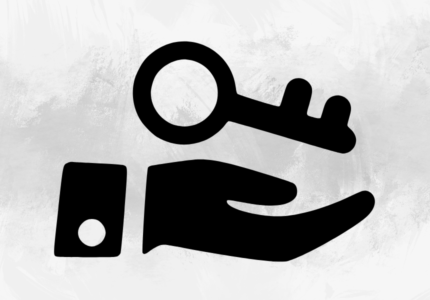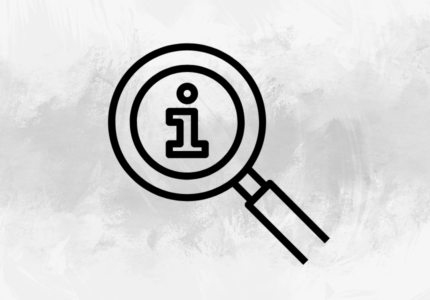
With competition high in all parts of the employment market, getting your Medical CV right requires the application of the skills that you learned and now deploy to get into the Medical profession: guidance, planning, and application. Although you may be a good doctor, consultant or nurse, your chances of employment depend on what your Medical CV says about you.
Medical CV
In Professional CV Writing terms, the Medical CV is a Technical CV: employers will only engage you once you have proven that you have the right qualifications first before they read the rest of your job application. So before you apply for any jobs, make sure that your qualifications and professional memberships are up to the required status. Secondly, as a technical professional position, you can never, ever lie on your CV: simply, it will at least hinder, if not end, your career. Thirdly, as a technical professional, your best opportunities for employment are most often gained through networking, so have a clear idea of what type of position you want next and who therefore is the manager or director within that target department.
Medical CV Templates
While in many areas of Professional CV Writing, CV Templates can result in you looking just like the next job applicant, in Medical CV Writing, your CV Format needs to conform to the basic principles of all Technical CVs: show that you have the required qualifications and professional endorsements within the first half page. Hence the Medical CV Layout should proceed and include as follow:
Personal Profile
Key qualifications and endorsements
Reverse chronological order of last three positions/five years of employment
List of crucial qualifications/papers
Other details
Often with senior medical staff, there is a long list of both research and published medical material and a series of conference attendances which are crucial to showing that qualifications and area knowledge are kept up to date. While the core information listed above can fit onto a standard 2page CV format, these publications and qualifications should be listed on separate sheets of paper.
Medical CV Layout
As with any CV Writing these days, never use the same CV to apply for multiple jobs. Make sure that you customize your CV to each job application by reading the job advert and confirming in your CV and Cover Letter that you have the required skills, qualifications and experiences.
Start with a personal statement that positions you as the answer to that employer’s solution: I am, I do/deliver, I seek. It’s the last section which requires whole customizing for each job application, in communicating why this job makes sense in your career path development.
Secondly, creating what is starting to be called a keywords section, but in actual fact, is a crucial issue for that employer focus. If you have read the job advert, and noted down the required combination of skills, qualifications and experiences (clinical proficiency and competence), then simply see this section as a worded “tick sheet” to show that you have that required combination. So if they want a staff nurse with experience in A&E, state “A&E staff nurse with three years experience;” if they want a cardiothoracic surgeon with experience in the latest techniques, state “lead cardiothoracic surgeon with experience in XYZ.” This is the first place where you can also confirm your current status, stating your registered status with your professional body, e.g., are your registered, have you passed your PLAB test, and if so, to what stage? The whole idea of this section is for the reader to say to themselves, within the first half page of your CV, that you pass the required basic job description requirements.
Medical CV Employment
Thirdly comes the employment history. Written up in reverse chronological order, employers will focus mainly on the last three to five years of experience, but it is more common in the Medical CV to include everything since graduation. So keep your focus on the last five years, and only include relevant positions to that job.
All positional write-ups should be in a STAR format (Situation, Task, Action, Result), focusing primarily on the significant achievements that you have made within that position over the responsibilities of that job. Referencing is highly important, and while in most CV Formats it should be left out, in the Medical CV, junior grades have the option of inserting the fact that they worked under a particularly well-known consultant.
One thing that is key in the Medical CV is the completeness of your employment timeline. Technical CVs require a high degree of authenticity and resultant trust, so be honest if you have a significant employment gap in your work history. Gaps for examinations are common (state what and where), as is travel within the medical industry, and in the current economic climate, unemployment is not a reason that a well-qualified candidate would not be interviewed.
Other Medical CV experiences
A simplified qualifications section of your central and highest academic qualifications and certifications should be included on your leading two-page CV, while the complete list should be placed in reverse chronological order on a separate sheet.
This same format can be applied to your primary clinical competencies and experiences, again with a full version listed on a separate sheet. For instance, the fact that you have specialized in the past five years should be wholly relevant to that job application and within your leading CV, whereas your early ward or GP work can be placed on the whole experience sheet.
Publications and research, particularly for specialist and high-ranking clinic roles, are an essential inclusion in any Medical CV. Published research work, whether you lead it or were part of a team, as well as books and lecture talks, can be included. The critical issue with this section is relevance, but again the most relevant pieces to that job should be included in your main Medical CV, while all publications and papers can be held in a separate sheet. Also, don’t forget mentions in any key publications.
Your membership status within your professional body should be stated in your key issues section, but membership of broader interests or specialist teams within a professional body should be included.
NHS campaigns and audits
As the health service has become more campaign-led, employers often look for essential skills in either creation, liaison, role out, or management of projects and interfaces with other core NHS bodies and the Department of Health. The same can be applied to local initiatives, but these should be covered in your core employment record.
In such cases, again using the STAR format, note where the initiative came from and why you got involved/what role you played. Was this role part of your day job role, or were you seconded onto the team for specific skills, and if so, what was it? Again, doing your day job is not a critical issue, but the outcome is, for instance, were your quicker/faster/more efficient at implementing your local solution? If so, was this improved way rolled back into the national program, which could have been led by a body such as NICE?
Medical Job References
References are far easier to obtain and collect within the medical profession for the prospective employer than in many other professions and industries, mainly because once authorized to obtain and authenticate such details for one part of the medical profession, accessing such information on others is virtually automatic.
Hence, once you decide to seek an alternative position, I suggest that you start to line up your references before you start writing your Medical CV and start applying for jobs. Also, be aware of what information you include on your Medical CV and to whom you have sent it. While HR teams and personnel within the NHS will have access to systems to allow your authentication, recruiters and outside agencies will not have direct access. Leaving too much information on your Medical CV could allow it to be used for purposes for someone to either steal your identity to undertake medical work or simply steal your identity for criminal activity such as fraud or credit theft. Hence don’t include your basic personal identity numbers (national insurance number, passport number, etc.) or professional medical body identities (i.e., GMC registration number).
Medical CV checks
Once you have drafted your CV before you send it, get at least three people to read it through and suggest changes/improvements; do this at least twice before you send your job application.
Good Luck!





